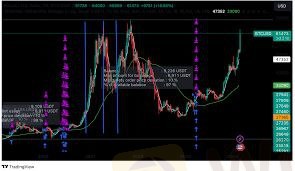
2024-12-24 04:12
SettoreREDUCING CRYPTO POSITION IN LOW ACTIVITY
#reducingvsclosingpositionsaroundchrismasmichriches#
Reducing cryptocurrency positions during periods of low trading activity requires a careful and strategic approach to minimize slippage and adverse price impact. Here are some best practices:
1. Use Limit Orders
Place limit orders to avoid selling at unfavorable prices due to low liquidity.
Set your price target slightly below the current market price to ensure execution during low activity while avoiding significant price dips.
2. Monitor Liquidity
Check the order book depth and trading volumes of your chosen exchange.
Avoid selling large amounts in illiquid markets, as this can significantly impact the price.
3. Break Up Large Trades
Split large positions into smaller tranches and sell them incrementally over time.
This reduces the likelihood of a single large order causing a price drop.
4. Use Automated Trading Tools
Employ algorithms like Time-Weighted Average Price (TWAP) or Volume-Weighted Average Price (VWAP) to distribute trades evenly over a specific period.
These tools help minimize market impact.
5. Choose the Right Time
Trade during peak trading hours when activity and liquidity are higher, even in otherwise low-activity periods.
Avoid weekends or holidays, when crypto markets often experience reduced participation.
6. Avoid Panic Selling
Assess the fundamentals of the cryptocurrency and broader market trends before deciding to reduce your position.
Stick to your predefined strategy to avoid emotional decisions.
7. Diversify Across Exchanges
If possible, distribute your sell orders across multiple exchanges with better liquidity to reduce concentration risk.
This can also help you find better execution prices.
8. Monitor Market Sentiment
Use tools like social media sentiment analysis and news monitoring to gauge market mood.
Positive sentiment may improve liquidity, making it easier to sell.
9. Engage in OTC Trading for Large Volumes
For significant positions, consider over-the-counter (OTC) trading. OTC desks handle large trades without affecting the spot market price.
10. Implement a Stop-Loss Strategy
Use stop-loss orders to protect your position from adverse price movements during low activity.
Key Risks to Consider
Slippage: Low trading activity can lead to significant price movement for larger orders.
Increased Volatility: Illiquid markets are often more volatile.
Price Gaps: Abrupt changes in price between trades are common in low-activity markets.
By employing these strategies, you can reduce your positions efficiently while minimizing potential losses.
Mi piace 0
charityyy
Trader
Discussione popolari
Settore
Offerta di lavoro Marketing
Settore
Marketing App
categoria forum

Piattaforma

Esibizione

IB

Reclutamento

EA

Settore

Mercato

indice
REDUCING CRYPTO POSITION IN LOW ACTIVITY
 Nigeria | 2024-12-24 04:12
Nigeria | 2024-12-24 04:12#reducingvsclosingpositionsaroundchrismasmichriches#
Reducing cryptocurrency positions during periods of low trading activity requires a careful and strategic approach to minimize slippage and adverse price impact. Here are some best practices:
1. Use Limit Orders
Place limit orders to avoid selling at unfavorable prices due to low liquidity.
Set your price target slightly below the current market price to ensure execution during low activity while avoiding significant price dips.
2. Monitor Liquidity
Check the order book depth and trading volumes of your chosen exchange.
Avoid selling large amounts in illiquid markets, as this can significantly impact the price.
3. Break Up Large Trades
Split large positions into smaller tranches and sell them incrementally over time.
This reduces the likelihood of a single large order causing a price drop.
4. Use Automated Trading Tools
Employ algorithms like Time-Weighted Average Price (TWAP) or Volume-Weighted Average Price (VWAP) to distribute trades evenly over a specific period.
These tools help minimize market impact.
5. Choose the Right Time
Trade during peak trading hours when activity and liquidity are higher, even in otherwise low-activity periods.
Avoid weekends or holidays, when crypto markets often experience reduced participation.
6. Avoid Panic Selling
Assess the fundamentals of the cryptocurrency and broader market trends before deciding to reduce your position.
Stick to your predefined strategy to avoid emotional decisions.
7. Diversify Across Exchanges
If possible, distribute your sell orders across multiple exchanges with better liquidity to reduce concentration risk.
This can also help you find better execution prices.
8. Monitor Market Sentiment
Use tools like social media sentiment analysis and news monitoring to gauge market mood.
Positive sentiment may improve liquidity, making it easier to sell.
9. Engage in OTC Trading for Large Volumes
For significant positions, consider over-the-counter (OTC) trading. OTC desks handle large trades without affecting the spot market price.
10. Implement a Stop-Loss Strategy
Use stop-loss orders to protect your position from adverse price movements during low activity.
Key Risks to Consider
Slippage: Low trading activity can lead to significant price movement for larger orders.
Increased Volatility: Illiquid markets are often more volatile.
Price Gaps: Abrupt changes in price between trades are common in low-activity markets.
By employing these strategies, you can reduce your positions efficiently while minimizing potential losses.
Mi piace 0
Voglio commentare
Fai una domanda
0Commenti

Non ci sono ancora commenti. Crea uno.

Fai una domanda
Non ci sono ancora commenti. Crea uno.